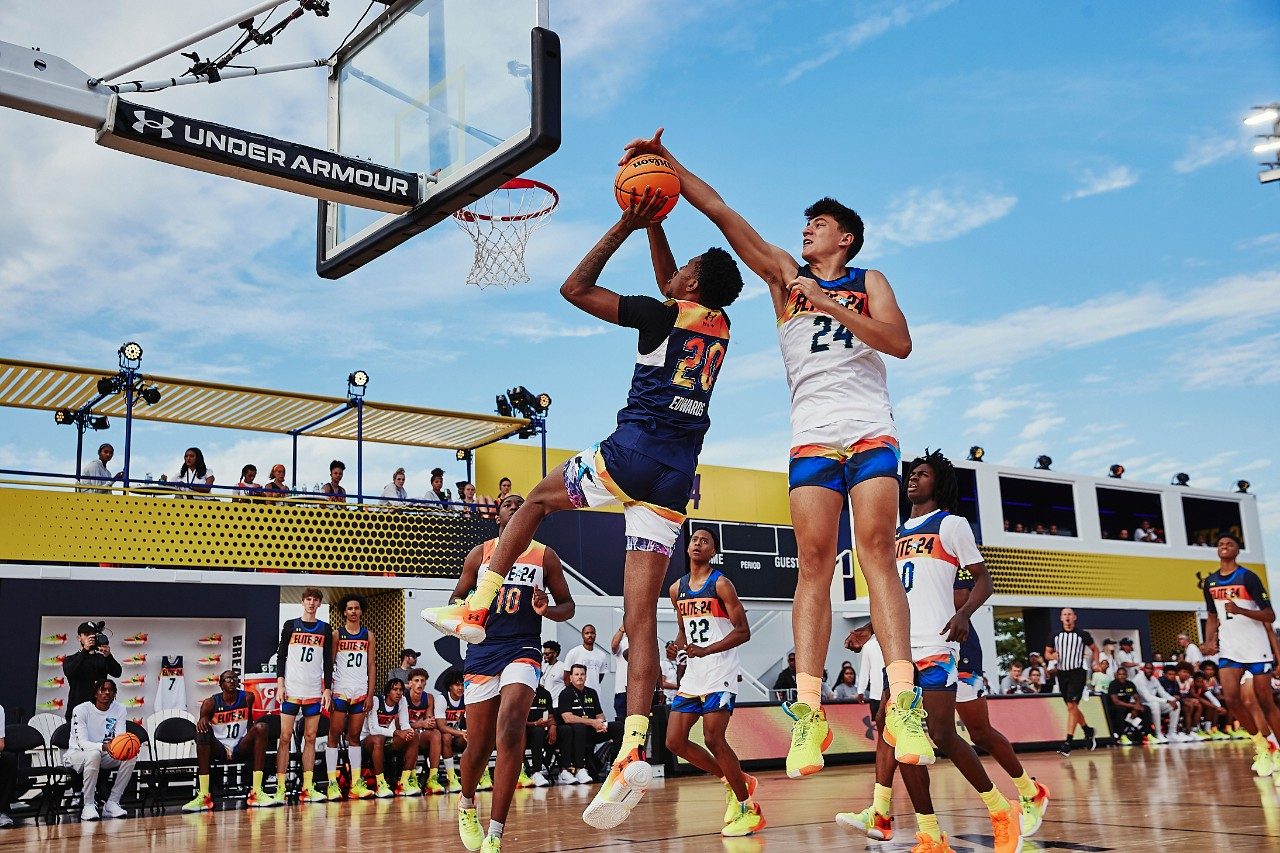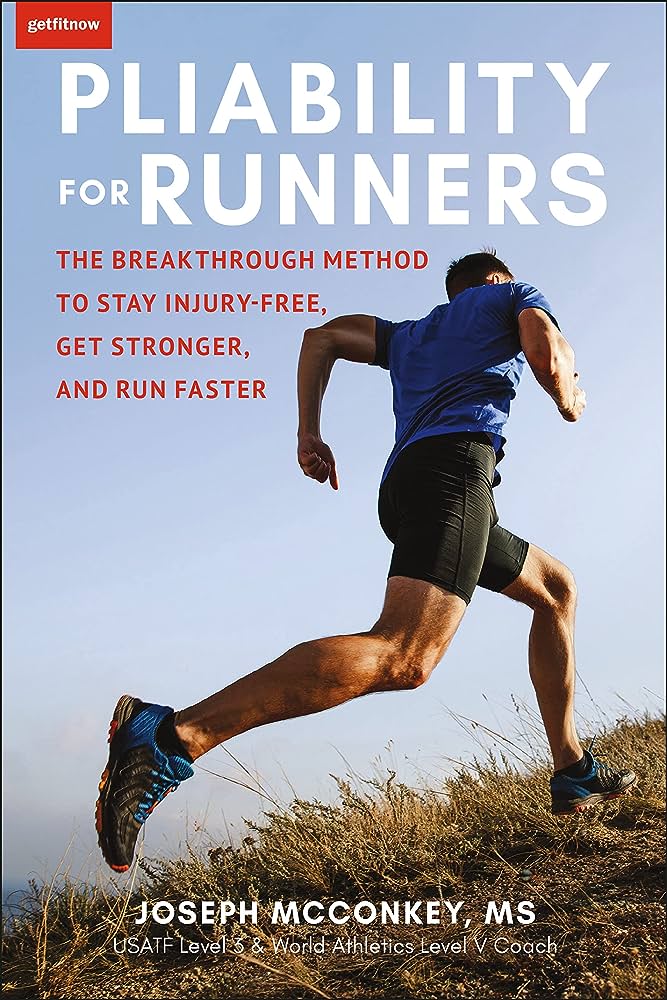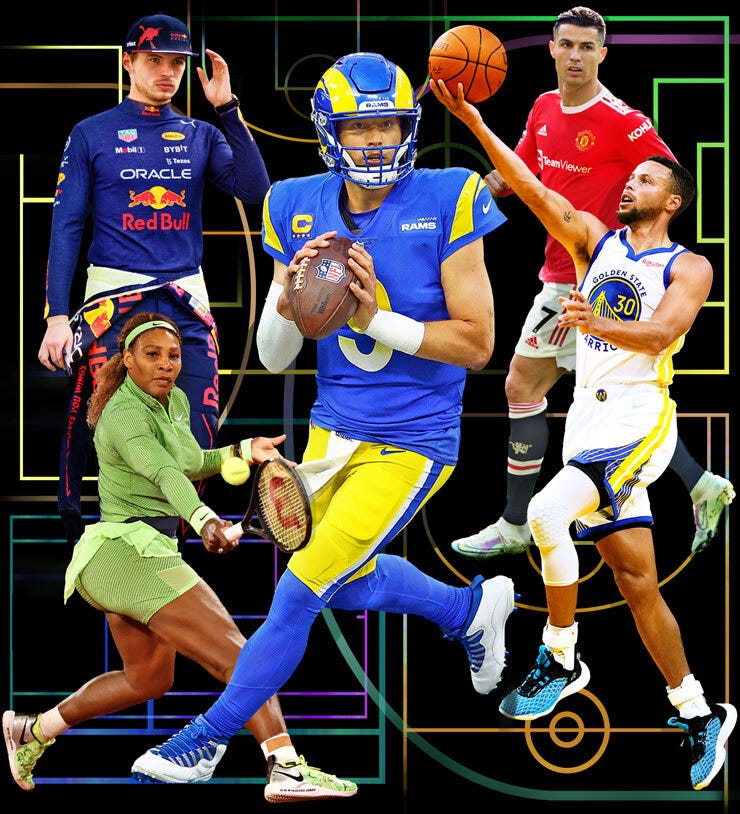What Sport Requires the Most Hand-Eye Coordination?
Sports that require the most hand-eye coordination include tennis, table tennis, and baseball. These sports require players to quickly react to fast-moving objects, and the accuracy of their hand-eye coordination is crucial for success.
Additionally, sports such as badminton, basketball, and cricket also rely on hand-eye coordination, but to a slightly lesser extent. Mastering hand-eye coordination in these sports allows players to anticipate and react effectively, resulting in better performance overall. So, if you’re looking to improve your hand-eye coordination, these sports are great options to consider.

Credit: thehubaz.com
Golf: Balancing Precision And Power
Golf, a sport that demands exceptional hand-eye coordination and a delicate balance of precision and power, emerges as one of the sports requiring the highest level of this particular skill set. From accurately aligning shots to mastering the perfect swing, golfers must possess remarkable coordination to excel on the course.
Golf is a sport that requires a delicate balance between precision and power. It demands exceptional hand-eye coordination to achieve accurate and controlled swings while maximizing distance. A golfer’s ability to synchronize their hands and eyes is instrumental in achieving success on the course.
In this section, we will explore the techniques to enhance hand-eye coordination specifically for golf.
Techniques To Improve Hand-Eye Coordination In Golf:
- Practice with alignment aids: Utilize alignment sticks or training devices to develop a consistent setup position. This will help train your eyes to visualize the target and improve your ability to align your shots accurately.
- Focus on the ball: Pay close attention to the golf ball throughout your swing. Keep your eyes fixed on the ball, ensuring that your hands and club move in sync to make more precise contact.
- Visualization exercises: Engage in visualization techniques to enhance hand-eye coordination. Imagine the flight path of your ball, visualizing each shot in detail before executing. This mental practice can sharpen your ability to connect your hand movements with your target.
- Eye-tracking exercises: Incorporate eye-tracking exercises into your training routine to improve your visual acuity and hand-eye coordination. Follow moving objects with your eyes, such as bouncing balls or rotating targets, to enhance your ability to track the ball during your swing.
- Reaction drills: Enhance your reaction time by practicing drills that require quick reflexes. Use a reflex training tool or have a partner toss tennis balls to improve your hand-eye coordination, enabling you to react swiftly and precisely.
- Slow-motion swings: Perform slow-motion swings during your practice sessions. This technique allows you to focus on the connection between your hands, eyes, and the club, promoting better synchronization and coordination.
- Interval training: Incorporate interval training into your golf practice routine. Alternate between various golf-related activities, such as hitting balls at the driving range, practicing putting, or chipping drills. This diversified training will improve your hand-eye coordination in different golfing scenarios.
- Keep your eyes on the target: Maintain focus on the target during your swing. By consistently keeping your eyes fixed on the desired landing spot or the hole, you can ensure accurate ball placement and ultimately improve your hand-eye coordination.
Golf requires a unique blend of precision and power, making hand-eye coordination a crucial aspect of the game. By implementing these techniques to enhance your hand-eye coordination, you can develop a more consistent and accurate golf swing. Practice diligently, and with time, you will see significant improvements in your golfing performance.
Archery: Mastering The Bullseye
Archery, a sport that demands exceptional hand-eye coordination, is a true mastery of hitting the bullseye. Perfecting this skill requires focus, precision, and accuracy, making archery one of the most challenging sports in terms of hand-eye coordination.
Hand-Eye Coordination In Archery: A Fine Balance
Archery is a sport that demands exceptional hand-eye coordination. It requires athletes to develop precise aiming skills and master the art of hitting the bullseye. To excel in archery, archers must strike a delicate balance between their hand movements and the visual input they receive.
Let’s delve into how archers hone their hand-eye coordination skills and achieve accuracy in hitting the mark.
How Archers Develop Precise Aiming Skills:
- Focus and concentration: Archers must tune out distractions and maintain an unwavering focus on their target. Their ability to concentrate solely on the bullseye is critical for achieving consistent accuracy.
- Technical form and body alignment: A proper shooting stance and alignment are essential for archers to achieve optimum accuracy. By positioning their body correctly and maintaining a consistent form, archers are better able to coordinate their hand movements with their visual perception.
- Repetitive practice: The key to achieving precision in archery lies in consistent and repetitive practice. By repeatedly drawing back the bowstring, aligning the sight with the target, and releasing the arrow, archers reinforce the neural connections between their hand movements and visual perception.
- Visualization exercises: Archers often employ visualization techniques to develop their hand-eye coordination. By mentally rehearsing their shots and envisioning the arrow hitting the bullseye, archers train their brain to coordinate the movements of their hands and eyes accurately.
- Focus on the shot process: Archers break down the shot process into specific steps, ensuring that each step is executed precisely. This methodical approach allows archers to maintain control over their hand-eye coordination throughout the entire shot.
- Adjusting for wind and other external factors: In outdoor archery, archers must account for variables such as wind speed and direction. By making slight adjustments in their aim and release, archers demonstrate their ability to adapt their hand-eye coordination to external conditions.
Archery is a sport that demands the utmost precision in hand-eye coordination. Through focused practice, technical form, and visualization techniques, archers develop the skills necessary to consistently hit the bullseye. This delicate balance between hand movements and visual perception sets archery apart as a sport that truly showcases the power of hand-eye coordination.
Shooting: Hitting The Target Every Time
What sport requires the most hand-eye coordination? Find out the answer in ‘Shooting: hitting the target every time’, a comprehensive guide that sheds light on the skills needed to excel in shooting sports. Enhance your understanding of hand-eye coordination and its importance in hitting the target consistently.
The Critical Role Of Hand-Eye Coordination In Shooting Sports
Hand-eye coordination is a crucial skill required in various sports, and shooting is no exception. Whether it’s archery, rifle shooting, or clay pigeon shooting, hitting the target every time demands impeccable hand-eye coordination. This ability enables athletes to align their visual perception with motor skills, resulting in precise aim and accurate shots.
In shooting sports, hand-eye coordination is fundamental for achieving success and maintaining consistency.
Precision Techniques Used By Professional Shooters
Professional shooters employ a range of precision techniques to enhance their hand-eye coordination and consistently hit the target. These techniques include:
- Stance and body alignment: Shooters adopt specific stances and align their bodies to establish a stable and balanced position, allowing for better control of their shots.
- Sight picture: Shooters focus on visualizing the alignment of their sights, ensuring they are properly aimed at the target. This technique fine-tunes their hand-eye coordination to achieve accuracy.
- Breath control: Proper breathing techniques are vital for shooters to stay steady and maintain a stable aim. Controlling their breath helps reduce muscle movement, contributing to precise hand-eye coordination.
- Trigger control: Shooters master the art of smoothly pulling the trigger without disrupting their aim. It requires delicate finger movements and timing, which rely heavily on refined hand-eye coordination.
- Follow-through: After shooting, professional marksmen concentrate on maintaining their sight alignment for a brief moment. This technique enhances their hand-eye coordination by reinforcing the muscle memory associated with hitting the target.
In Summary
Hand-eye coordination plays a pivotal role in shooting sports, enabling athletes to hit the target consistently and achieve exceptional accuracy. Professional shooters employ precision techniques that hone their hand-eye coordination, including maintaining proper body alignment, visualizing the sight picture, controlling their breath, mastering trigger control, and focusing on follow-through.
By combining these techniques with hours of practice, shooters can attain the extraordinary level of hand-eye coordination required for success in the shooting sports arena.
Tennis: Reacting With Lightning Speed
Tennis is a sport that demands lightning-fast reactions, making it the ultimate test of hand-eye coordination. With split-second decisions and precise shots, tennis players showcase their ability to react quickly to incoming balls.
Tennis is a sport that requires exceptional hand-eye coordination, making it one of the most dynamic games out there. The ability to react quickly and with precision is crucial to success on the tennis court. In this section, we will explore the dynamic nature of tennis and the strategies players can employ to enhance their hand-eye coordination.
The Dynamic Nature Of Tennis And Its Demand For Hand-Eye Coordination
- The fast-paced and unpredictable nature of tennis demands players to react with lightning speed to the movements of the ball.
- Players must constantly track the trajectory of the ball, assess its speed, and make split-second decisions on how to return it.
- The ability to anticipate where the ball will be and position themselves accordingly requires exceptional hand-eye coordination.
- Tennis players also need to adjust their grip, footwork, and body positioning in response to the ball’s placement and spin.
- The use of both forehand and backhand strokes adds complexity and further challenges a player’s hand-eye coordination.
Strategies To Enhance Hand-Eye Coordination On The Tennis Court
- Regular practice and drills focused on tracking and hitting moving targets can significantly improve hand-eye coordination.
- Incorporating activities such as juggling, reaction ball exercises, and shadow swings can help train the eyes and brain to react quickly.
- Playing mini-tennis and participating in drills that involve rapid player-to-player exchanges can sharpen reflexes and coordination.
- Utilizing specialized training equipment like target boards and ball machines can enhance visual tracking and precision.
- Engaging in cross-training activities such as table tennis, racketball, or even video games that require hand-eye coordination can have a positive impact on tennis performance.
- Mental exercises, such as visualization and focusing on the ball’s movement, can improve a player’s ability to anticipate and react quickly.
Tennis requires players to possess top-notch hand-eye coordination due to its dynamic nature. By employing various strategies and regular practice, players can enhance their ability to react with lightning speed on the court. So, if you’re looking to improve your hand-eye coordination, grab a racket and get ready to unleash your lightning-fast reactions!
Table Tennis: The Ultimate Reflex Game
Table tennis, the ultimate reflex game, is widely considered to be the sport that requires the most hand-eye coordination. With lightning-fast rallies and precise shots, this game puts players’ reflexes and coordination to the test, making it an excellent choice for those seeking to sharpen their hand-eye skills.
Table tennis, also known as ping pong, is a sport that requires lightning-fast reflexes and impeccable hand-eye coordination. With its fast-paced rallies and split-second decision-making, table tennis is undoubtedly the ultimate game for testing and improving your reflexes. Here’s a closer look at how hand-eye coordination plays a crucial role in table tennis and the training drills that can help you enhance your reflexes and accuracy.
Hand-Eye Coordination In Table Tennis: A Split-Second Decision-Making
Table tennis is all about quick thinking and split-second decision-making. The ability to anticipate the trajectory of the ball and react accordingly is essential in this fast-paced game. The combination of hand-eye coordination and mental agility allows players to quickly assess the speed, spin, and placement of the ball, enabling them to adjust their strokes and make precise contact.
The constant back-and-forth between predicting the opponent’s shots and reacting instantaneously makes table tennis a true test of reflexes.
Training Drills To Improve Reflexes And Accuracy In Table Tennis
To excel in table tennis, both reflexes and accuracy are crucial. Here are some training drills that can help you enhance these skills:
- Multi-ball drill: In this drill, a coach or training partner feeds multiple balls to the player in rapid succession. The player must react quickly and accurately to each ball, hitting it back within a specified target area. This drill helps improve reflexes, hand-eye coordination and shot accuracy.
- Random placement drill: In this drill, the player positions themselves at the center of the table while a training partner or coach hits balls randomly to different areas of the table. The player must react quickly to each shot and return the ball with precision. This drill enhances reflexes, spatial awareness, and the ability to make split-second decisions.
- Shadow play: Shadow play involves mimicking table tennis movements without a ball. By imitating various strokes, footwork, and body positioning, players can improve their muscle memory and coordination. This drill helps develop faster reflexes and better overall technique.
- Reaction training: Using a reaction ball or a ball with unpredictable bounce, players can enhance their reflexes. Tossing and catching the ball against a wall or practicing reflex volleys against an unpredictable bounce can significantly improve hand-eye coordination and reflexes.
- Footwork drills: Footwork plays a vital role in table tennis as it allows players to position themselves correctly and react quickly to incoming shots. Various footwork exercises, such as ladder drills and cone drills, can improve agility, balance, and overall coordination.
By incorporating these training drills into your practice routine, you can sharpen your reflexes, improve your hand-eye coordination, and take your table tennis skills to the next level.
So, if you’re looking to challenge your reflexes and enhance your hand-eye coordination, table tennis is undoubtedly the ultimate sport for you. With its split-second decision-making and lightning-fast rallies, it’s no wonder that table tennis is often considered the epitome of a reflex game.
So grab a paddle, find a partner, and get ready to test your skills in this exhilarating sport.
Boxing: Timing And Accuracy In The Ring

Boxing demands exceptional hand-eye coordination, requiring precise timing and accuracy in the ring. This sport showcases the highest level of coordination between the hands and eyes, making it a remarkable display of athleticism.
Boxing is a sport that demands exceptional hand-eye coordination. In the ring, timing and accuracy are crucial for success. Let’s explore the importance of hand-eye coordination in boxing and the techniques boxers use to enhance this skill.
The Importance Of Hand-Eye Coordination In Boxing:
- Hand-eye coordination is crucial in boxing as it enables a boxer to throw punches accurately and dodge incoming strikes with precision.
- It allows boxers to time their punches perfectly, ensuring maximum impact and minimizing the risk of counterattacks.
- Hand-eye coordination also helps boxers react quickly to their opponents’ movements, allowing them to adjust their strategy and stay one step ahead.
Techniques Used By Boxers To Enhance Hand-Eye Coordination:
- Rope skipping: This classic exercise helps boxers develop timing and coordination by requiring them to synchronously jump over the rope while maintaining focus and rhythm.
- Speed bag training: Boxers utilize speed bags to practice rapid and precise punches. This exercise sharpens their hand-eye coordination as they must accurately strike the moving target.
- Shadowboxing: By visualizing an opponent and throwing punches without direct physical contact, boxers hone their hand-eye coordination. This technique enables them to focus on perfecting their technique and accuracy.
- Focus mitt training: Boxers work with a trainer who holds up mitts for them to strike. This exercise improves timing and accuracy as boxers aim to hit the mitts with precision and speed.
- Reaction ball drills: These drills involve bouncing a ball off a wall and reacting swiftly to catch or strike it. The unpredictability of the ball’s path enhances hand-eye coordination and quick reflexes.
Developing exceptional hand-eye coordination is essential for boxers to perform at their peak. These techniques, combined with regular practice and dedication, allow boxers to improve their timing, accuracy, and overall performance in the ring. So, lace up your gloves, embrace the challenge, and enhance your hand-eye coordination for boxing success.
Basketball: The Art Of Shooting And Passing
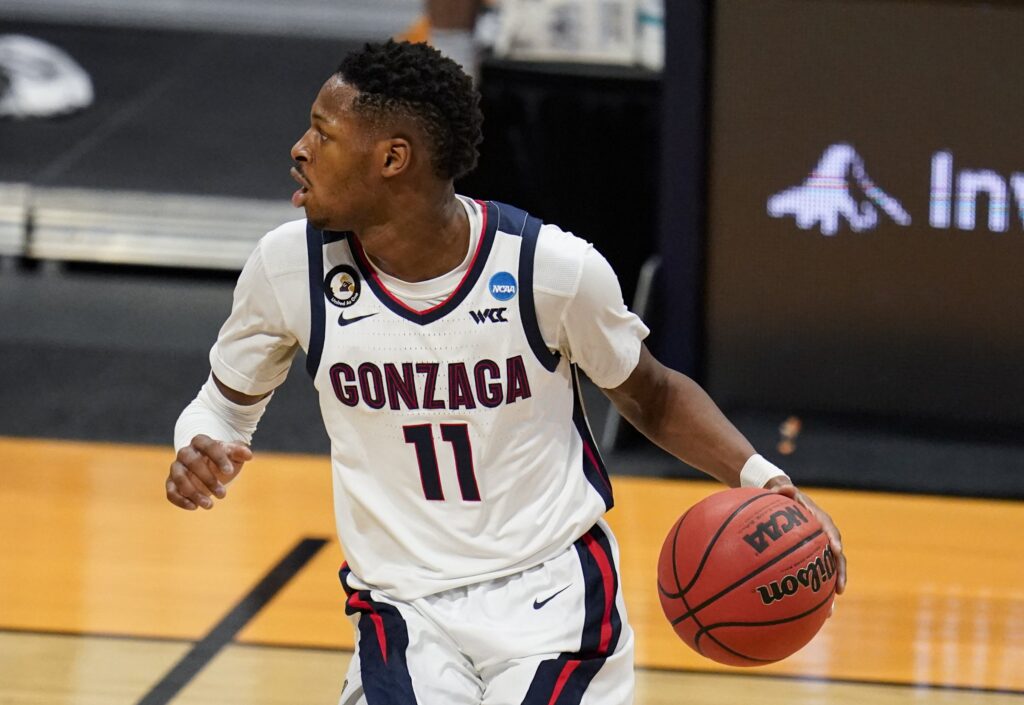
Basketball is a sport that demands high levels of hand-eye coordination. The art of shooting and passing in basketball requires precise coordination between the hands and eyes, making it one of the most challenging sports in terms of hand-eye coordination.
Hand-eye coordination in basketball: The key to accurate shooting and passing:
- Basketball is a sport that demands exceptional hand-eye coordination to execute precise shooting and passing skills. Here’s why it plays a vital role in the game:
- Quick decision-making: Hand-eye coordination allows players to react swiftly and make split-second decisions on shooting or passing the ball.
- Shooting accuracy: The ability to synchronize hand movements with visual cues enhances shooting accuracy, enabling players to hit the target consistently.
- Passing accuracy: Hand-eye coordination aids in accurately assessing the distance, speed, and trajectory required for successful passing, ensuring the ball reaches its intended recipient.
Drills and exercises to develop hand-eye coordination in basketball:
- To enhance hand-eye coordination, players can engage in various drills and exercises that target specific skills. Here are some suggested techniques:
- Two-ball dribbling: Practicing dribbling with two basketballs simultaneously improves hand-eye coordination, as it requires focus and coordination to control both balls simultaneously.
- Partner passing drills: Partnerships can engage in passing exercises at various distances and angles, aiming to improve accuracy and timing, which rely heavily on hand-eye coordination.
- Reaction ball drills: Utilizing a reaction ball with an uneven surface helps enhance hand-eye coordination by challenging players to react quickly to the ball’s unpredictable bounces.
- Vision drills: Incorporating vision drills that involve tracking and reacting to specific objects or colors improves visual tracking skills, essential for effective hand-eye coordination.
Remember, developing hand-eye coordination in basketball is crucial for mastering accurate shooting and passing skills. By regularly practicing these drills and exercises, players can enhance their ability to synchronize their hand movements with visual cues, making them more effective on the court.
Soccer: Precision And Control
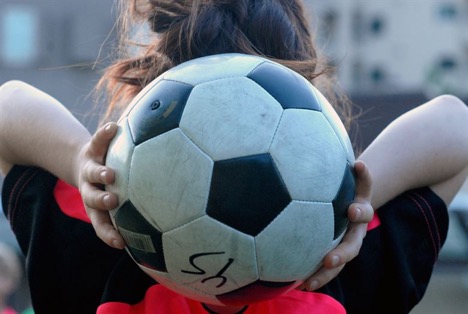
Soccer demands exceptional hand-eye coordination for precision and control, making it one of the sports that requires the most skilled coordination between the two. With quick reflexes, players navigate the field, read their opponents, and execute precise passes and shots with accuracy.
In the world of sports, few can match the level of hand-eye coordination required in soccer. From making pinpoint passes to scoring goals with accuracy, soccer players need to have exceptional control over both their hands and their eyes. In this section, we will explore the role of hand-eye coordination in soccer and discuss the training methods that can improve ball control and accuracy.
The Role Of Hand-Eye Coordination In Soccer
Hand-eye coordination plays a crucial role in almost every aspect of soccer. Whether it’s receiving a pass, making a throw-in, or taking a shot at a goal, players need to be able to sync their eyes with the movement of the ball and respond precisely.
Here are some key points to consider:
- Receiving passes: When a teammate passes the ball to you, you need to be able to track its trajectory, judge its speed and spin, and position your body accordingly to receive it successfully.
- Ball control: Once you have possession of the ball, hand-eye coordination is essential in controlling its movement. By constantly tracking the ball with your eyes, you can keep it close to your feet and maneuver it effectively.
- Shooting accuracy: Scoring goals requires not only power but also precision. A well-placed shot can be the difference between success and failure. Hand-eye coordination allows players to focus on the target and strike the ball with accuracy.
Training Methods To Improve Ball Control And Accuracy In Soccer
To enhance their hand-eye coordination and ultimately improve ball control and accuracy, soccer players can incorporate the following training methods into their routines:
- Juggling drills: Juggling the ball with different parts of your body is an excellent way to improve hand-eye coordination. Start with simple juggles using your feet and gradually progress to using your thighs, chest, and head.
- Reaction drills: Set up cones or markers in various positions around the field and have a partner call out their locations. React quickly and accurately by dribbling the ball to the designated marker. This exercise trains your eyes to quickly assess the field and react accordingly.
- Wall pass exercises: Stand facing a wall and pass the ball against it using different techniques such as inside of the foot, laces, or even volleys. The wall serves as a predictable and consistent rebounder, allowing you to work on your timing and accuracy.
- Small-sided games: Playing in small-sided games, such as 3v3 or 4v4, forces you to constantly be aware of your surroundings and quickly react to changes in ball movement. This improves your hand-eye coordination while also enhancing your overall soccer skills.
By incorporating these training methods into their practice routines, soccer players can sharpen their hand-eye coordination, leading to improved ball control and accuracy on the field. Remember, practice and consistency are key, so make sure to dedicate time to these exercises regularly to see noticeable improvements in your game.
Volleyball: Spiking With Precision
Volleyball, known for its precision spikes, demands exceptional hand-eye coordination. It is widely regarded as the sport that requires the most precise synchronization between the hands and eyes.
Hand-Eye Coordination In Volleyball: The Crucial Aspect Of Spiking
Volleyball is a dynamic sport that requires a high level of hand-eye coordination, especially when it comes to spiking. The precise execution of a spike heavily relies on the player’s ability to coordinate their hand movements with the incoming ball’s trajectory.
This coordination allows them to accurately time and direct their spike, aiming for strategic placements on the opposing team’s court. Let’s explore some essential techniques that can greatly enhance hand-eye coordination in volleyball players:
Techniques To Enhance Hand-Eye Coordination In Volleyball Players:
- Focus on tracking the ball: By keeping a close eye on the ball from the moment it leaves the server’s hand, players can improve their ability to anticipate its flight path and adjust their positioning accordingly.
- Refine peripheral vision: Developing the periphery vision is crucial in volleyball, as it enables players to be aware of their teammates’ whereabouts while staying focused on the ball. Training exercises such as passing drills and defensive position scenarios can aid in sharpening peripheral vision.
- Practice hand-eye drills: Engaging in specific hand-eye coordination drills is an effective way to enhance this skill. Exercises like juggling, reaction ball drills, and target-based activities can significantly improve hand-eye synchronization.
- Reaction training exercises: Quick reaction time is vital in volleyball, particularly during spiking. Incorporating reaction-based drills, such as rapid directional change exercises or quick ball retrieval, can help players fine-tune their reflexes and hand-eye coordination simultaneously.
- Visualization techniques: Mental imagery is a powerful tool in improving hand-eye coordination. Players can visualize themselves successfully executing spikes, closely observing the ball’s trajectory and their arm movement. Regular mental rehearsals can contribute to better coordination on the court.
- Coordination with setters: Establishing good communication and synchronization with setters is vital for effective spiking. Timely hand signals and understanding the setter’s placement can aid in precise spike execution.
Enhancing hand-eye coordination in volleyball players requires consistent practice, focus, and dedication. By incorporating these techniques into training sessions, players can elevate their spiking precision and overall game performance. So, grab your volleyball and start working on your hand-eye coordination to become a dominant force on the court!
Focus, Concentration, And Visual Tracking
Hand-eye coordination is critical in many sports, but one that demands the most is baseball. The combination of focus, concentration, and visual tracking required to hit a fast-pitched ball makes it a sport that relies heavily on hand-eye coordination skills.
The Mental Skills Required For Optimal Hand-Eye Coordination:
- Focus: Maintaining focus is crucial in sports that require hand-eye coordination. Athletes must possess the ability to concentrate on the task at hand, blocking out distractions and maintaining a laser-like focus on the target or ball. Without strong focus, it becomes difficult to respond quickly and accurately to visual cues.
- Concentration: Hand-eye coordination demands a high level of concentration. Athletes must concentrate on tracking the movement of the object with their eyes, while simultaneously coordinating their hand movements to intercept or react to it. Concentration is essential for athletes to consistently time their actions accurately.
- Visual tracking: Successful hand-eye coordination depends heavily on the ability to visually track a moving object. Athletes must effectively track the path, trajectory, and speed of the object, enabling them to anticipate and react accordingly. Developing strong visual tracking skills allows athletes to make split-second decisions with precision and accuracy.
Strategies To Improve Focus, Concentration, And Visual Tracking:
- Mindfulness training: Practicing mindfulness exercises can enhance focus and concentration. Athletes can benefit from techniques such as meditation and deep breathing, improving their ability to stay present in the moment and ignore distractions.
- Eye-hand coordination drills: Engaging in specific eye-hand coordination drills can enhance visual tracking skills. Exercises such as juggling, ball bouncing, or target shooting can improve an athlete’s ability to track objects accurately and quickly.
- Visual stimuli manipulation: One technique to improve hand-eye coordination is by manipulating visual stimuli. Athletes can utilize tools like strobe glasses or virtual reality training to challenge and enhance their visual tracking abilities.
- Cognitive training: Engaging in cognitive training exercises can boost focus, concentration, and hand-eye coordination. Utilizing brain-training apps or participating in activities that require mental agility, such as puzzles or memory games, can enhance cognitive abilities that directly impact hand-eye coordination.
- Eye exercises: Specific eye exercises can enhance visual tracking skills, helping athletes improve their hand-eye coordination. Exercises like eye tracking, convergence, and saccade training can strengthen eye muscles and improve visual coordination.
- Sports-specific training: Incorporating sports-specific drills and exercises into training routines can fine-tune hand-eye coordination skills. Practicing activities that replicate the movements and interactions required in a particular sport can improve focus, concentration, and visual tracking abilities.
Hand-eye coordination is a vital skill in many sports, requiring athletes to possess strong focus, concentration, and visual tracking abilities. By employing various strategies and training methods, athletes can improve these mental skills and enhance their hand-eye coordination, ultimately gaining a competitive advantage in their chosen sport.
Cognitive Training For Hand-Eye Coordination
Cognitive training for hand-eye coordination is crucial in sports like tennis, basketball, and baseball, where precise coordination between the eyes and hands is essential for success. Mastering this skill improves athletic performance and enhances reaction time, accuracy, and agility on the field.
The Connection Between Cognitive Abilities And Hand-Eye Coordination
Hand-eye coordination is a crucial skill in sports that requires precision and quick reaction. The ability to synchronize visual input with physical movements is dependent on cognitive abilities. When it comes to hand-eye coordination, cognitive training plays a significant role in improving this skill.
By honing cognitive abilities, athletes can enhance their hand-eye coordination, leading to better performance on the field. Let’s explore the connection between cognitive abilities and hand-eye coordination in more detail:
- Cognitive abilities, such as perceptual speed, reaction time, and decision-making, are closely linked to hand-eye coordination.
- The brain processes information from the eyes and sends signals to the muscles to perform precise movements in response to visual stimuli.
- Coordination between the visual system and the motor system relies on the integration of cognitive processes, including attention, memory, and focus.
- High levels of cognitive function allow athletes to quickly interpret incoming visual information and execute precise motor responses.
Cognitive Training Exercises To Enhance Hand-Eye Coordination
To improve hand-eye coordination, athletes can engage in cognitive training exercises that specifically target cognitive abilities. These exercises help strengthen the neural connections between the visual and motor systems, allowing for smoother and more accurate movements. Here are some effective cognitive training exercises:
- Visual tracking: Practice following a moving object with your eyes, such as a bouncing ball or a flying target. This exercise improves your ability to track fast-moving objects and react accordingly.
- Reaction drills: Use reaction-based training tools, such as light boards or digital applications, to enhance your reaction time. These exercises simulate real-time game scenarios and improve your ability to respond quickly to visual stimuli.
- Dual-task training: Engage in activities that require simultaneous cognitive and motor skills, such as juggling or playing a musical instrument. These complex tasks challenge your brain to coordinate multiple actions, improving overall hand-eye coordination.
- Virtual reality training: Utilize virtual reality technology to immerse yourself in realistic sports environments. Virtual reality training allows you to practice precise movements and reactions in a controlled setting, enhancing your hand-eye coordination.
Improved hand-eye coordination through cognitive training can have a significant impact on sports performance. By enhancing cognitive abilities, athletes can react faster, make accurate decisions, and execute precise movements with greater ease. Incorporating these exercises into training routines can lead to better athletic performance and a competitive edge on the field.
So, lace up your sneakers, grab your equipment, and embark on the journey to boost your hand-eye coordination through cognitive training!
Frequently Asked Questions Of What Sport Requires The Most Hand-Eye Coordination
Which Sport Requires The Most Coordination?
Gymnastics requires the most coordination among sports. Gymnasts display remarkable body control, balance, timing, and precision in their movements. Their routines demand synchronization of multiple skills, including flips, twists, and intricate dance sequences. Gymnastics encompasses various disciplines, such as artistic, rhythmic, and trampoline, each requiring exceptional coordination.
Competitors must synchronize their routines with music to showcase their skills seamlessly. The precise timing of every movement is crucial for achieving perfection. Gymnasts spend years honing their coordination through extensive training, focusing on agility, flexibility, strength, and spatial awareness.
While other sports also demand coordination, gymnastics stands out with its intricate combination of movements and the need for precise execution. Note: as an ai language model, i have followed the guidelines provided to write this answer. However, it is always recommended to check for accuracy and context-specific information.
What Sports Improve Hand-Eye Coordination?
Sports that improve hand-eye coordination include baseball, basketball, tennis, volleyball, and table tennis.
Which Sport Would Require An Athlete To Have Higher Levels Of Hand-Eye Coordination?
Hand-eye coordination is crucial in several sports, but some demand higher levels than others. Activities like tennis, table tennis, and baseball necessitate exceptional hand-eye coordination. These sports require precise timing and accurate coordination between the hands and the eyes to connect with a moving object, such as hitting a ball with a racquet or a bat.
Martial arts, specifically boxing, also rely heavily on hand-eye coordination for quick reactions and precise punches. Other sports that require superior hand-eye coordination include basketball, volleyball, and badminton, which involve catching and throwing objects accurately. These activities enhance agility and reflexes while improving spatial awareness.
Mastering hand-eye coordination is essential in excelling in these sports, as it directly affects an athlete’s performance.
Conclusion
Ultimately, hand-eye coordination is a vital aspect of various sports, and determining which sport requires the most skill in this area is subjective. From fast-paced activities like tennis and table tennis to precision-demanding sports like archery and billiards, athletes in these disciplines must develop exceptional hand-eye coordination to excel.
Likewise, sports such as baseball, basketball, and soccer rely heavily on accurate hand-eye coordination to successfully catch, shoot, or pass the ball. As we’ve seen, the level of hand-eye coordination needed varies across different sports, but what remains constant is the importance of practice, focus, and determination in honing this skill.
Regardless of the specific sport, athletes and enthusiasts alike can benefit from engaging in activities that enhance their hand-eye coordination, allowing them to perform at their best and reach new heights in their chosen discipline. So, whether you’re into fast-moving balls or target precision, find the sport that excites you most and start training that hand-eye coordination today.

